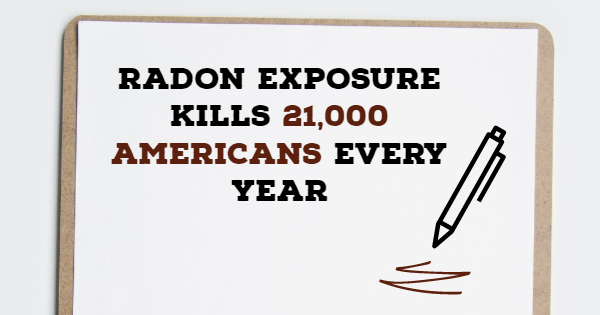Radon is a radioactive gas that has been known to have significant impacts on an individual’s health. Various studies have proven that radon gas increases the chance of developing lung cancer over time. At the same time, it also makes people vulnerable to various other illnesses. Radon testing is the only reliable way you can know whether your home has high levels of radon gas so that you can deploy radon mitigation systems.
If you have never heard about radon gas and radon testing, here are a few things you need to know so that you can deal with radon levels in your home.
Is Radon a Problem?
The Environmental Protection Agency (EPA) indicates that radon becomes a problem when it is trapped in higher quantities within the house. Studies show that radon exposure kills 21,000 Americans every year, which is a clear indication that radon is a major problem. Therefore, it is important to incorporate residential radon testing detectors to monitor the radon levels in your home. Depending on the device you will be using, you will get radon test results for two to 90 days.
How Does Radon Get Into Your Home?
Radon testing is an important security measure, but it is more important to know how radon gets into your house. The EPA indicates that radon moves from the surrounding soil into your home. Any house, no matter the age, is susceptible to radon gas through floors, walls, and other entry gaps. It all depends on how your house interacts with the surrounding environment. Hiring a radon testing contractor to know the state of your home should be an ongoing security practice.
How to Conduct Radon Testing
Residential radon testing services help in determining radon levels in your home, whether in the short term or long term. It is upon you to figure out what works for your home. If you have a feeling that radon levels might be high, testing radon in the short term and long term could be the only feasible solution. Most of the radon testing companies have experienced technicians who will guide you on what works.
What’s most important is that you conduct radon tests in your home regularly. Having the tests done once may not give a true reflection of reality. However, you are likely to know the status of your home if these tests are done throughout the year.
How to Reduce Radon Levels in Your Home?
After regular radon tests indicate that your home has high radon levels, it is high time you incorporate various measures to reduce radon prevalence in your home. One method involves sealing concrete with the most appropriate material as recommended by EPA.
The second recommended strategy is using polyurethane caulk to seal foundation cracks, foundation joints, and any other openings. You also need to make sure that you cover the soil in crawl spaces with a certified polyurethane plastic sheet. Lastly, you need to make sure that your sump pump installation is done by professionals to prevent leakages.
What About Radon Mitigation?
With a reputable radon mitigation company, you can invest in a radon mitigation system. The system is designed to ventilate your home using PVC pipes that draw the radon from the soil and out of your home. A radon mitigation system is only incorporated after radon testing results indicate that your home has high radon levels. Make sure you get a reliable radon gas removal system for effective services.
What Next?
Are you struggling with radon gas in your Colorado home? You need to call a professional company to help you conduct radon testing and incorporate the necessary radon mitigation system. For unmatched customer service, rely on the professionalism of Affordable Radon Colorado.


Recent Comments